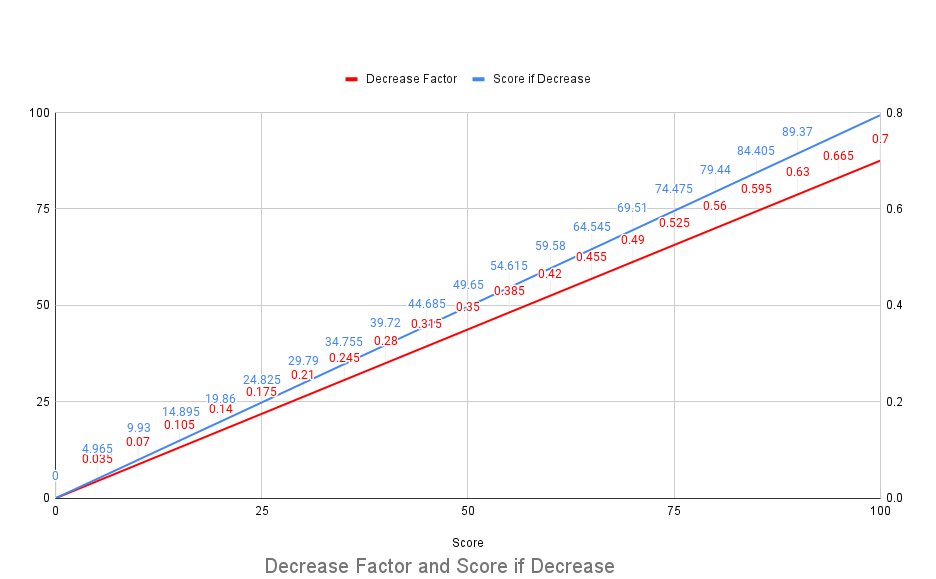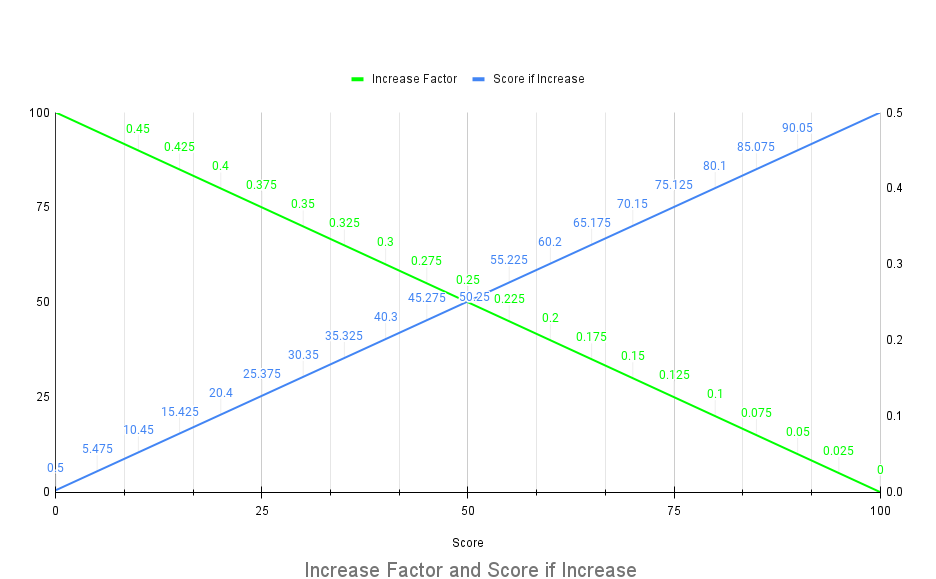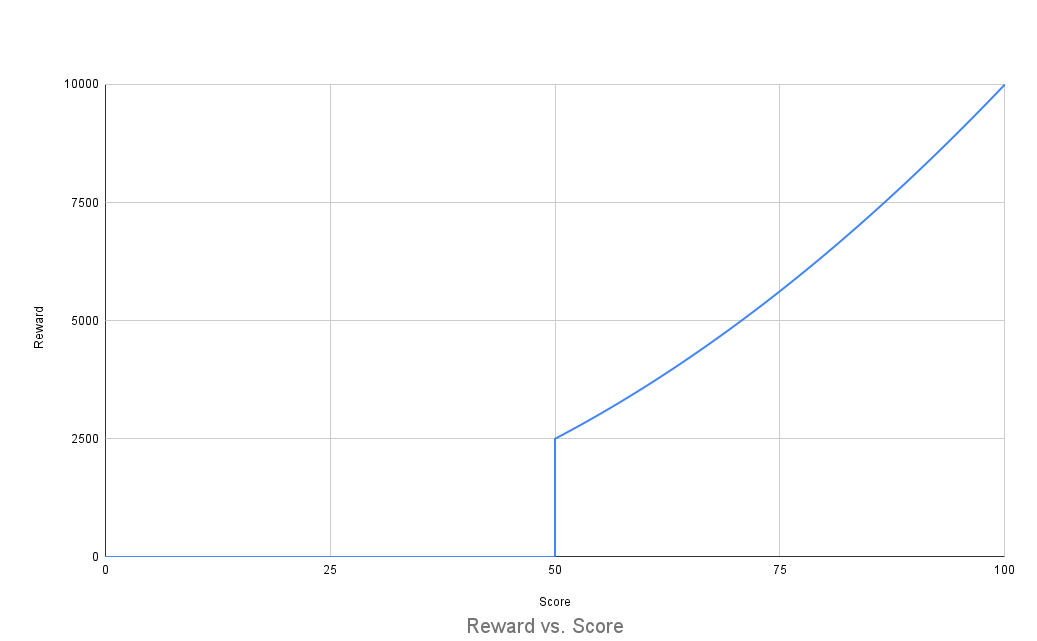Scoring
Scoring Mechanism
When messaging nodes join the Soarchain network, they are assigned a score . Any messaging node that scores higher than the initially assigned score is considered to be a well-functioning node. The reward distribution process is executed according to the score of a messaging node, which is an indicator of how well it has been performing in its correct and honest state.
When a challenge result is received, the score is updated according to the outcome of the challenge. The score is always kept within the range of 0 to 100, and all nodes start with an initial score of 50. If the challenge was successful, the score is increased by a certain amount based on the current value of the score. If the challenge was unsuccessful, the score is decreased by a different amount also based on the current value of the score.
The calculation of the score and the corresponding increase or decrease is performed using the following formulas:
Let be the current score, and be a challenge result indicating whether the score should be increased (=true) or decreased (=false).
The increase and decrease factors are calculated as follows:
where = 0.5 and = 0.7 according to the current development network parameters. Note that main network parameters may differ, thus affecting these factors.
The new score is determined based on the outcome of the challenge. We check the value of the variable, which represents the outcome of a challenge. If is true, it means that the challenge was successful and the score should be increased. In that case, we check if the current score () is already close to the maximum score (100). If it is, the score is increased by a small amount. If the current score is not close to the maximum, the score is increased by a larger increase factor that was calculated earlier.
If is false, it means that the challenge was unsuccessful and the score should be decreased. In that case, we check if the current score is already close to the minimum score (0). If it is, the score is decreased by a small amount. If the current score is not close to the minimum, the score is decreased by a larger decrease factor that was calculated earlier.
Scoring Formula


Vehicles don’t get any rewards if their score drops below 50. The relationship between the Reward Multiplier and Score is given as following:
where ω, τ and ψ are network parameters. τ is calculated based on the timestamp of the last completed challenge and starts increasing after a threshold is passed, penalizing non-contributing behavior. ψ on the other hand, tracks the regularity of a vehicle’s contributions and becomes infinitesimally small if a vehicle’s contributions are more uniformly distributed. Currently τ and ψ are chosen to be 0 and ω = 2

At each score epoch, the scores of the nodes are updated. At each reward epoch, the rewards are distributed according to a calculation which takes rewardMultiplier into account alongside some variables that depend on all the vehicles in the network. At any given reward epoch, the nominal reward that a vehicle will get is calculated according to the following formula:
where is the sum of each vehicle’s rewardMultiplier within the network and epochRewards is the number of tokens that will be emitted as rewards (initially configured as a network parameter).